Dawn chorus walks - 7th May 2006
Return to the list of reports04:30 AM
A calm, cool and grey clouded start greeted those of the O.B.S. that had stirred early enough to be out on the first of the Dawn Chorus Walks of 2006.
As soon as we stepped out of the Community Centre a salvo of bird song hit our ears, the resident Blackbirds being the main components of this onslaught.
Heading east and then north up Station Road Woodpigeons soon made their presence felt, these becoming the most frequently recorded bird during the morning. The local Mallards, so called, were already invading the gardens and both Coot and Moorhen were heard calling on the filtration lagoons. A Grey Heron moving south-west was a nice early morning bonus.
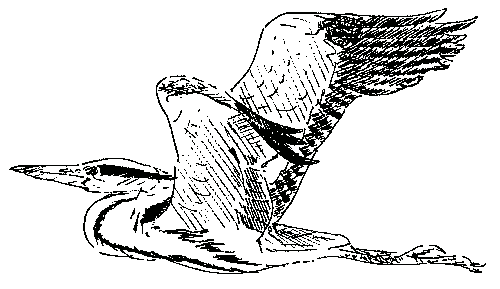
Rooks and Jackdaws were also heading that way, presumably to feed on the short turf of the sheep fields off White and Turrill Hills. A crowing Pheasant was way off to the west, possibly the bird seen later in the walk in Little Meadow, whilst a Little Grebe was trilling on the lagoons.
The Test held a pair of Gadwall with up to three more being overhead shortly afterwards. The first of the summer visitors, Blackcap and Chiffchaffs, were in song, these being joined in their chorus by Dunnock, Wren, Goldcrest, Chaffinch and Song Thrush.
Moving into Flashetts, the rookery on Hilltop Road was still busy with the residents whilst the paddock below held Moorhens and Rabbits, both feeding out on the grass. The aforementioned summer visitors were in song along the track but difficulty was had in hearing them, due to the large amount of other species drowning out their warbling. Three pipistrelle sp. flew low over our heads as they, presumably, headed towards their daytime roosts.
Moving back towards the village centre a cock Pheasant was wandering about Little Meadow and Rooks were sat on the nearby gravestones, a Magpie briefly seen was the only one of the morning. Seven Mallards were amongst birds using the recreation ground for the early morning forage.
The old allotments along Kingsclere Road were more notable for their snails than the birds, many being out on the still night-wet vegetation. The bridges across the river allowed viewing of an interesting local wildlife happening - six 'goldfish' making the most of the famous trout stream.
House Sparrows and Greenfinch had risen by the time we reached Town Mill where a Grey Wagtail was also heard.
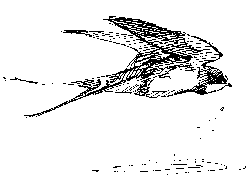
A Swallow over the river was another 'late' riser and both Starling and Collared Dove just about managed to rouse themselves before the walk finished.
29 species of birds were recorded with 74 being in song. View the list of species here.
06:00 AM
The clouding was beginning to break up as just two people made their way out for the second walk of the morning. The slightly clearer sky had a little chill to it and a hint of mistiness could be picked up over some distant areas.
Collared Doves were by now warmed up enough to pursue each other about the streets whilst their bigger cousins, Woodpigeons, seemed to be almost everywhere. Starlings and House Sparrows were more obvious about the village centre whilst some of the earlier songsters were already quietening. The first Swift and Swallow moved out over the houses, small numbers still only being recorded during the walk along the Nature Trail.
The rails were still calling on the lagoons on walking Station Road, the ducks were still in the gardens and Chiffchaffs, Goldcrests and Dunnocks were just some of the birds more obviously vocal at this later hour.
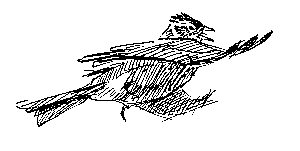
A Skylark was heard in song over the ground yet to be 'improved' by the building on Overton Hill. Goldfinches were also more obvious, small groups moving about the taller trees lining the road, and the first Long-tailed Tits were in deep cover by Quidhampton Mill. The pair of Gadwall remained on The Test with another pair close by. A group of low flying hirundines was made up of at least six House Martins, the first of the day.
Many of the Rooks were seen to have moved off from their roost and a Great Spotted Woodpecker was heard 'kikking' in adjacent woodland. A Mistle Thrush rattled in the Station Hill area and a small group of Swallows fed low over the pasture. An unidentified wildfowl call from the filtration pools proved interesting, but remained just that, unidentified and interesting!
Pheasant were still crowing on reaching Kingsclere Road and a Linnet headed north-west over the apparently wildlife-less farmland. A Little Grebe was heard on the lagoons and the only singing Song Thrush was added in the Bridge Street area. The Mallards were still by the cricket pitch, though in lesser, but more active, numbers. Marsh Marigold was in flower alongside the stream by the tennis courts.
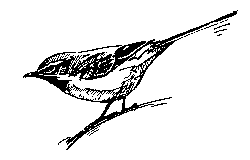
A male Grey Wagtail was sat atop Town Mill and the river held a brood of six 'Mallard' battling against the current. The chocolate-brown and marbled plumages of these strongly hinting at their non-native parents!
35 species of birds were recorded with 64 being in song; the additions to the birds already noted being Greylag, Swift, Great Spotted Woodpecker, Skylark, House Martin, Mistle Thrush, Long-tailed Tit and Linnet. View the list of species here.
07:30 AM
Four joined in this the last walk of the morning as the weather continued to improve, the breaking clouding allowing some blue sky and sun through, though the temperature still felt cooler than on the earliest jaunt.
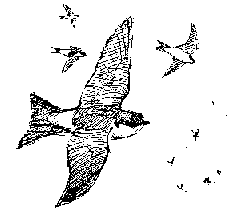
As on the previous walk, the birds associated with village habitation were on the increase, House Sparrows, Starlings and House Martins all going up in their counts.
The Skylark remained in song at Overton Hill and was even seen as it drifted closer to Station Road. Looking out over the lagoons from here saw a mass of insectivorous summer migrants denuding the local insect population - Swifts, Swallows and, primarily, House Martins all joining in this breakfast feast. Other flying birds along the road included two Grey Wagtails heading towards Polhampton and three Black-headed Gulls dropping into the water areas, the first seen locally since March. A Greylag seen heading off low eastwards confirmed the identification of the mystery wildfowl on the 06:00 walk and an equally vocal Coal Tit became the fourth tit of the morning.
Five Gadwall were now about The Test where a pair of Little Grebes had emerged from the reedy edges. Singing Goldcrests were even more vocal now, everybody managing to hear their high pitched and repetitive songs.
A Great Spotted Woodpecker was heard, then seen, and then heard drumming in Flashetts, the sex of the bird confirmed by the latter, and the rich red colouration on the head as it sat above the group in a decaying tree for some time.
Blackcap and Chiffchaff were now more readily heard as they continued to sing, many other birds now having stopped. The first local orchids of the year were found by the path, 15 spikes of Common Twayblade that were well hidden amongst the burgeoning ground cover - the harder you looked, the more that were found.
The last three species to be added were all moving over. A Linnet headed south-east, two racing pigeons moved with purpose and a Pied Wagtail flew low across the cricket pitch grass. The latter site held a couple of relaxed Mallards, five worm-gathering Blackbirds and waddling Woodpigeons.
The introduced fish in The Test had now been joined by two Brown Trout with Moorhens, Coots and Mallards also present; the brood of ducklings having managed to move along to another stretch of river since our last visit.
37 species of birds were recorded with 42 being in song. Further additions to the list of birds noted during the previous walks being Black-headed Gull, 'Racing' Pigeon, Pied Wagtail and Coal Tit.
A total of 41 bird species was recorded by the ten members that attended the three walks, as were several animal, many plants, just a few invertebrates and even fewer of the locals! (View the list of species here.) The quiet blanketing the village was noticeable throughout all of the walks - the birds being the main source of noise 'pollution'!
I would like to thank all those that attended; their awareness, curiosity and enthusiasm helping the walks pass all that more interestingly. Thanks are also due to the providers and makers of the refreshments, the breakfasts going down very well - literally!
Return to the list of reportsPeter E. Hutchins
